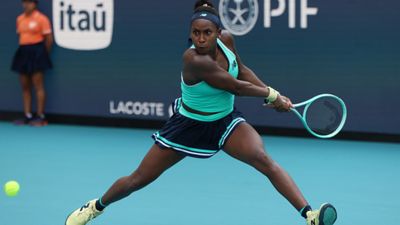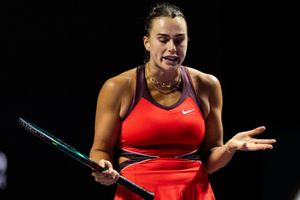Coco Gauff’s recent on-court struggles have sparked debates across the tennis world—and now, a seasoned WTA veteran is weighing in with a fiery theory. The 21-year-old American, currently ranked World No. 3, has battled erratic form since her Australian Open quarterfinal exit, crashing out early in Doha, Dubai, Indian Wells, and Miami. While her powerful baseline game remains intact, a glaring Achilles’ heel has emerged: her serve.
But what’s behind the sudden spike in double faults and shaky confidence? Former Top 10 star Andrea Petkovic claims she’s cracked the code—and her take might surprise you.
A veteran’s theory on Coco Gauff’s serve woes
Petkovic, known for her tactical insight post-retirement, dropped a bombshell on her Becker Petkovic podcast, suggesting Gauff’s serve struggles stem from an unconscious return to old habits. Last fall, Coco Gauff parted ways with coach Brad Gilbert and teamed up with grip specialist Matt Daly, whose adjustments initially paid off.
By late 2024, her double faults dwindled to just one or two per match. But recent weeks tell a different story: 22 double faults in a single Indian Wells clash, 12 during her Miami loss to Magda Linette, and eight in a three-set defeat to Belinda Bencic.
“My theory is the grip has gone back to the old one,” Petkovic asserted. “When you change a grip, if you’re not constantly reminded, muscle memory kicks in. It does not work at the moment.”
The German highlighted how Daly’s technical tweak—likely altering Gauff’s continental grip to optimize power—requires relentless reinforcement. Without it, Petkovic argues, Gauff’s instincts are betraying her mid-match.
A pattern of regression
The stats paint a stark picture. After a promising start under Daly, Coco Gauff’s service game has unraveled. At Indian Wells, she survived a second-round thriller against Moyuka Uchijima despite 20+ double faults—a red flag Petkovic calls “unsustainable.”
“She won, but with 22 double faults? Something’s not right,” the veteran added. Even Gauff’s wins now come with asterisks, as opponents exploit her faltering serve.
Petkovic’s critique isn’t just technical; it’s psychological. “Changing grips mid-career is like rewiring your brain,” she explained. “If the player isn’t constantly drilling the new motion, the old patterns resurface under pressure.”
For Gauff, whose serve has long been scrutinized, this regression risks becoming a mental hurdle.
What’s Next for Gauff?
With the Billie Jean King Cup bypassed, Coco Gauff eyes redemption at April’s Stuttgart Open, where she’ll face top rivals Iga Świątek and Aryna Sabalenka. But Petkovic’s warning lingers: without addressing the grip relapse, even Stuttgart’s clay courts might not offer respite.
For now, all eyes are on Team Gauff. Will they double down on Daly’s methods—or is another coaching shakeup looming?
ADVERTISEMENT










